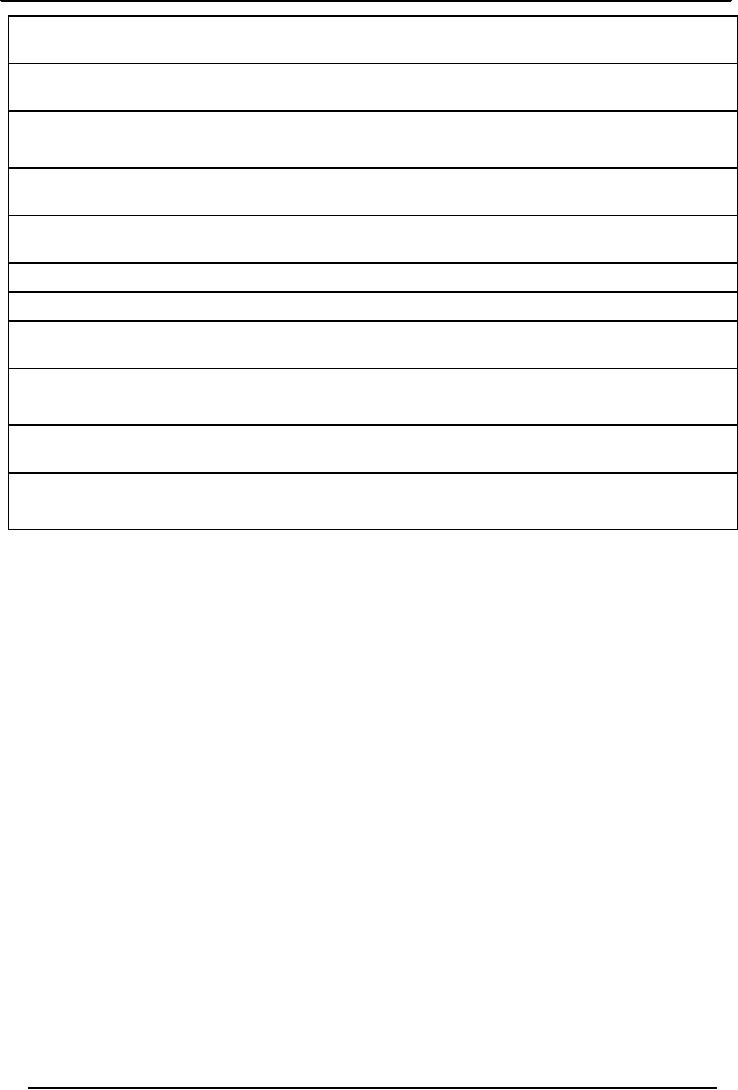 |
CORE CONCEPTS OF GEORGE KELLY’S COGNITIVE THEORY OF PERSONALITY |
| << KELLY’S COGNITIVE THEORY OF PERSONALITY THEORY:Biographical Sketch |
| GORDON ALLPORT: A TRAIT THEORY OF PERSONALITY:Personality as a >> |

Personality
Psychology PSY 405
VU
Lesson
25
CORE
CONCEPTS OF GEORGE KELLY'S
COGNITIVE THEORY OF
PERSONALITY
Recap
(Lecture No. 24)
1-Kelly's
theory is phenomenological it focuses on
the internal frame of reference of the
individual.
2-It
is cognitive because it studies
mental events.
3-It
is existential because it emphasized the
future and individual's freedom to
choose,
4-Humanistic
since it focuses on creative powers
and optimistic about
people's ability to solve
their
problems.
For
Kelly an individual's behavior and
thoughts are guided by a set
of personal constructs that are
used in
predicting
future events.
A
person's processes (behavior and
thinking) are channelized by ways that he
anticipates reality.
Examples
of constructs include "good
versus bad," "friendly
versus hostile." These
constructs are the
ones
which
many people use to construe
events in their daily
lives.
Core
concepts of George Kelly's
Cognitive Theory of
Personality
1-
The Psychology of Personal
Construct
2-
Biographical Sketch
3-
Cornorstones of Cognitive Theory
i-Constructive
Alternativism
ii-
People as Scientists
4-
Personal Construct Theory
i-Constructs:
Templets for Reality
ii-Formal
Properties of Constructs
iii-Types
of Constructs
5-
Personality: The Personologist's
Construct?
6-
Motivation: Who Needs
It?
7-
A postulate and some corollaries
8-
Channelizing Processes
9-
Individuality and Organization
10-
To Construe or Not to Construe: That Is the
Question
11-
C-P-C Cycle
12-
Change in a Construct System
13-
Social Relationships and
Personal Constructs
14-
Role Construct Repertory Test:
Assessing Personal
Constructs
15-
Application:
1-Emotional
States Anxiety, Guilt,
Hostility.
2-Psychological
Disorders
16-
Psychological Health and
Disorder
17-
Fixed-Role Therapy
98

Personality
Psychology PSY 405
VU
18-
Summary
19-
Evaluation
(Start
of Lecture 25)
7-
A Postulate and Some
Corollaries
The
formal structure of personal construct theory is
both economical and parsimonious in that
Kelly
advanced
his central tenets by using
one fundamental postulate and eleven
elaborative corollaries.
i)
The
construction corollary states
that constructs are formed
on the basis of common themes in
our
experiences.
ii)
The
individual corollary states
that constructs are
contained within other
constructs.
iii)
The
organization corollary individuals
differ in the in how they
construe events but how
they
organize
constructs.
iv)
The
dichotomy corollary states
how certain events are
similar and also how those
events are
contrasted
with other events.
v)
The
choice corollary states that
those constructs are chosen
that best define and extend
one's
construct
(generalizing) system.
vi)
The
range corollary states that
each construct has a range of convenience
consisting of the
events
to which the construct is
relevant.
vii)
The
experience corollary states it is not
physical experience that is important
rather the process
of
construct forming, revising and testing
of one's construct system.
viii)
The
modulation corollary says
some constructs are permeable , open to
experience than other
constructs.
ix)
The
fragmentation says while
trying new constructs the
people can be inconsistent.
x)
The
commonality says for two
people to be similar they
must construct their concepts
in
similar
manner.
xi)
The
sociality says that in order
to play a role one must
determine what other person
expects
and
then act in accordance with
the expectations.
8-Channelizing
Processes
Each
personality theorist seems to have a
language of his or her own when
describing human behavior.
Kelly
is no exception, as can be seen in
his fundamental postulate: "A person's
processes are
psychologically
channelized by the ways in which he anticipates
events".
9-Individuality
and Organization
The
individuality corollary appears
particularly helpful in understanding the
uniqueness of personality:
"Persons
differ from each other in
their construction of events"
(Kelly, 1955, p. 55). For
Kelly, no two
people,
whether they be identical
twins or supposedly similar in outlook,
will approach and interpret the
same
event in exactly the same
way. Each person construes
reality through his or her
unique personal
construct
"goggles." Hence, differences between
people are rooted in their
construing events from
different
perspectives.
Examples
Consider
the traditional differences of opinion
between political parties on such issues
as welfare, military
spending,
taxation, forced racial
integration, and capital
punishment. Or reflect on why
students may
disagree
with professors, professors
with department chairpersons, department
chairpersons with
deans,
and
everybody with college presidents. Or
what is popularly called the
"generation gap"- the
fundamental
differences
of viewpoint between parents and their
offspring- a situation which, in
Kelly's theory, might
more
properly be labeled a "personal construct
gap."
10-To
Construe or Not to Construe: That Is
the Question
99

Personality
Psychology PSY 405
VU
Kelly's
choice corollary describes how
people make these selections: "A
person chooses for himself
that
alternative
in a dichotomized construct through which
he anticipates the greater possibility for
extension
and
definition of his system" In other words,
one will choose the construct pole
that renders the event
most
understandable-the
one that will contribute
most to the predictive efficiency of
one's construct system.
11-
C-P-C Cycle
When
individuals are confronted
with a novel situation, they
apply the CPC cycle. In the
Circumspection
phase
of the cycle people think
over a number of constructs that
they feel may be appropriate
to the
situation.
In the preemption phase they
choose those concepts that
seem relevant. In the control
phase they
act
on the basis of the constructs chosen in
the preemption phase.
circumspection-preemption-control
(C-P-C) cycle, which
involves a sequential progression
from
construction
to overt behavior. In the first
phase of the C-P-C cycle, the circumspection
phase, an
individual
considers a number of different
constructs as they relate to a particular
situation-that is, she
contemplates
the various possibilities facing her in a
propositional fashion. This is analogous
to looking at
all
sides of the question. (Recall
that a propositional construct is open to
new experiences.) The
preemption
phase
follows when the individual
reduces the number of alternative
constructs (hypotheses) to ones
most
appropriate
to the problem. Here she
decides which of the preemptive
alternatives to use. Finally,
during
the
control phase of the cycle,
she decides on a course of
action and its accompanying
behavior. The choice
is
made, in other words, based on an
estimate of which alternative construct
is most likely to lead
to
extension
and definition of the
system.
12-Change
in a Construct System
A
construct system enables an individual to
anticipate events as accurately as
possible.
Kelly
postulated that a change in One's construct
system occurs most often
when one is exposed to
novel
or
unfamiliar events which do
not confirm to one's
existing system Of constructs.
Accordingly, the
experience
corollary states: "A person's construct
system varies as he successively
construes the replication
of
events" (1955, p.
72).
13-Social
Relationships and Personal
Constructs
Kelly
asserted in his individuality
corollary, people differ as a
result of the way they
interpret situations,
then
it follows that they may be
similar to others to the extent
that they construe
experiences in similar
ways.
Thus,
if two people view the world
in the same way (i.e., are
similar in their constructions of
personal
experiences),
they are likely to behave in
similar ways. The essential
point is that people are
similar neither
because
they have experienced similar events
nor because they manifest
similar behavior: they are
similar
because
events have approximately the same
psychological meaning for
them.
14-Role
Construct Repertory Test: Assessing
Personal Constructs
Kelly
(1955) developed the Role Construct
Repertory Test to identify the
important constructs a
person
uses
to construe significant people in
his or her life. More
importantly, the Rep Test
was originally devised
as
a diagnostic instrument to assist the
therapist in understanding a client's construct
system and the way
the
client uses it to structure his or her
personal and material environment.
Table
9-1 Role Title List
Definitions for the Gridform of the
Rep Test
Role
titles
Definitions
1
Self
Yourself
2
Mother
Your
mother or the person who has
played the part of a mother in
your life
3
Father
Your
father or the person who has
played the part of a father in
your life
4
Brother
Your
brother who is nearest your
own age, or if you have no
brother, a boy near
your
own
age who was most
like a brother to you during
your early teens
100

Personality
Psychology PSY 405
VU
5
Sister
Your
sister who is nearest your
own age or, if you have no
sister, a girl near your
own
age
who was most like a
sister to you during your
early teens
6
Spouse
Your
wife (or husband) or, if you
are not married, your
closest present friend of
the
opposite
sex
7
Accepted
The
teacher who influenced you
most when you were in your
teens
teacher
8
Rejected
The
teacher whose point of view
you found most objectionable
when you were in
teacher
your
teens
9
Boss
An
employer, supervisor, or officer
under whom you worked
during a period of great
stress
10
Doctor
Your
physician
11
Pitied person
The
person whom you would
most like to help or for
whom you feel most
sorry
12
Rejecting
A
person with whom you have
been associated, who, for
some unexplained
reason,
person
appeared
to dislike you
13
Happy person
The
happiest person whom you
know personally
14
Ethical
The
person who appears to meet
the highest ethical standards
whom you know
person
personally
15
Intelligent
The
most intelligent person whom
you know personally
person
15-
Application:
1-Emotional
States
2-Psychological
Disorders
Emotional
States:
Kelly
retained but redefined several
traditional psychological concepts of
emotion in terms relevant
to
cognitive
theory.
Anxiety:
It
is thus, the vague feeling of apprehension and
helplessness commonly labeled as
anxiety is, for Kelly,
a
result
of being aware that one's
available constructs are not
applicable to anticipating the events
one
encounters.
Anxiety is created (experienced)
only when one realizes that one
has no constructs with
which
to
interpret an event. Kelly
often facetiously referred to a
person in this state as
being "caught with
his
constructs
down." Under such
circumstances an individual cannot
predict, hence cannot fully
comprehend
what
is happening or solve the
problem.
Guilt:
The
guilty person is aware of
having deviated from the
important roles (self-images) by which
she or he
maintains
relationships to others. For example, a
college student who construes
himself as a scholar will
feel
guilty if he spends too much
time at the local club house
with his roommates, thus
violating the most
basic
aspect of his role as a
scholar, namely
studying.
Hostility:
Hostility,
a final illustration of emotional
states, is defined as the "continued
effort to extort
validational
evidence
In favor of a type of social prediction
which has already proved
itself a failure" (Kelly,
1955, p.
510).
Traditionally considered a disposition to behave
vindictively toward or inflict harm
upon others,
101

Personality
Psychology PSY 405
VU
hostility
in Kelly's system is merely an attempt to
hold onto an invalid construct in the
face of
contradictory
(invalidating) evidence.
16-Psychological
Health
Each
day clinical psychologists deal
with the realities of psychological
health and disorder. How are
these
concepts
to be understood within Kelly's theory?
Turning first to health,
distinct characteristics define
the
well-functioning
person from Kelly's
perspective.
First,
and perhaps most important,
healthy persons are willing
to evaluate their constructs and to
test the
validity
of their perceptions of other people. In
other words, such people
test the predictions derived
from
their
personal constructions of social experiences.
Second,
healthy persons are able to
discard their constructs and reorient
their core role systems
whenever
they
appear to be invalid. In Kelly's
terminology, their constructs
are permeable, meaning not
only that
they
can admit when they
are wrong, but also
that they can update their
constructs when their
life
experiences
so dictate.
17-
Fixed-Role Therapy
While
many of the therapeutic methods described
by Kelly (1955) are
compatible with those used
in other
clinical
schemes (including psychoanalysis), there
are two distinguishing
features of his approach: first,
his
conception
of what the goal of psychotherapy should
be and, second, the development and practice
of
fixed-role
therapy.
Kelly
discussed the nature and task of
therapeutic change in terms of the
development of better construct
systems.
Since disorders involve using constructs
in the face of consistent invalidation,
psychotherapy is
directed
toward the psychological reconstruction of the
client's construct system so that it is
more
workable.
But more than this, it is
an-exciting process of scientific
experimentation. The therapy
room is a
laboratory
in which the therapist encourages the
client to develop and test
new hypotheses, both within
and
outside
the clinical situation. The
therapist is highly active-constantly
pushing, and stimulating the
client to
try
new constructs on for size.
If they fit, the client can
use them in the future; if not,
other hypotheses are
generated
and tested. Science is thus the
model clients use in
reconstructing their lives.
Along with this, it
is
the
therapist's task to make
validating data (information
feedback) available, against which the
client can
check
his own hypotheses. By
providing these data in the
form of responses to a wide
variety of the client's
constructions,
the clinician actually gives the
client an opportunity to validate
his constructs, an
opportunity
which
is not normally available to
him (Kelly, 1955).
Kelly
went beyond this unique
interpretation of psychotherapy to develop
his own specific brand
fixed-role
therapy.
Fixed-role therapy maintains
that, psychologically, human beings are
not only what they
construe
themselves
to be but also what they
do. In general terms, the therapist sees
her role as one of
encouraging
and
helping the client to perceive
and construe himself in new
ways and to act accordingly,
thereby
becoming
a new, more effective
person.
How
does fixed-role therapy
actually work? It begins by having the
client write a sketch of
himself in the
third
person. The sketch has no
detailed outline, and the client is
only the following instructions.
Note how
the
instructions elicit objectively,
minimize threat, and allow the client
freedom of expression.
18-
Summary
George
Kelly's cognitive theory is
based on the philosophical position of
constructive alternativism,
which
holds
that reality is what one
construes it to be. Accordingly, an
individual's perception of reality is
always
subject
to-interpretation and modification. Man
is a "scientist," constantly generating
and testing
hypotheses
about the nature of things so that
adequate predictions of future
events can be made.
Persons
comprehend their worlds through
transparent patterns, or templets, called constructs.
Each
individual
has a unique construct system
(personality) which he or she
uses to construe or
interpret
experience.
Kelly theorized that all
constructs possess certain
formal properties: range of
convenience,
focus
of convenience and permeability-impermeability.
Kelly also recognized various types of
constructs:
preemptive,
tight , and loose.
102

Personality
Psychology PSY 405
VU
Kelly's
theory is formally stated in
terms of one fundamental postulate and
eleven elaborative
corollaries.
The
former stipulates that a person's
processes are psychologically channelized
by the ways in which she
or
he anticipates events, while the
corollaries explain how a construct
system functions, changes,
and
influences
social interaction.
Although
Kelly's theoretical concepts have
directly stimulated little
research to date, he devised a
personality
instrument, the Rep Test,
which has been widely
employed in a variety of studies.
The Rep Test
assesses
personal constructs; in this chapter, its
use is illustrated in two
investigations of schizophrenic
thought
disorder.
19-Evaluation
Kelly's
theory is phenomenological and as
phenomenologist believes that
behavior should not be
broken
down
into components or
parts
It
is a cognitive theory because it
stresses how people think
and view the reality. It does
give emphasis to
the
unconscious processes.
It
is Existential and Humanistic, it focuses
on the following facts that
humans are free and
future oriented,
their
subjective feelings and personal
experiences are important and
they are concerned with the
meaning in
life.
Each
individual creates his or her
own unique constructs for
dealing with the world,
trying to reduce
future
uncertainty
and he is free to view and think
about reality.
103
Table of Contents:
- THE NATURE OF PERSONALITY THEORY:Objectives of Personality Psychology
- PERSONALITY MEASUREMENT:Observational Procedures, Rating Scales
- MAIN PERSPECTIVES:Psychometrics, observation, Behavioral Coding Systems
- SIGMUND FREUD: A PSYCHOANALYTIC THEORY OF PERSONALITY
- INSTINCT: WHAT MOTIVATES HUMAN BEHAVIOR?, The Oral Stage
- PSYCHOANALYTIC THEORY OF SIGMUND FREUD:The Ego, Free association
- THEORY OF CARL JUNG:Biographical Sketch, Principles of Opposites, The Persona
- THE PSYCHOLOGICAL TYPES:Childhood, Young Adulthood, Middle Ages
- ALFRED ADLER:Biographical Sketch, Individual Psychology, Feeling of Inferiority
- INDIVIDUAL PSYCHOLOGY:Fictional Finalism, Social Interest, Mistaken Styles of Life
- KAREN HORNEY:Adjustment to Basic Anxiety, Adjustment Techniques
- ADJUSTMENT TO BASIC ANXIETY:Moving Towards People, Moving Against People
- ERIK ERIKSON:Anatomy and Destiny, Ego Psychology, Goal of Psychotherapy
- ERIK ERIKSON:Human Development, Goal of Psychotherapy
- SULLIVAN’S INTERPERSONAL THEORY:Core Concepts, The Self-System
- SULLIVAN’S INTERPERSONAL THEORY:Cognitive Process, Tension
- CONSTITUTIONAL PSYCHOLOGY:The Structure of Physique, Evaluation
- SHELDON’S SOMATOTYPE THEORY:The Structure of Physique
- MASLOW’S THEORY:Self-Actualizers Aren't Angels, Biographical Sketch
- MASLOW’S THEORY:Basic Concepts of Humanistic Psychology, Problem Centering
- ROGERS PERSON CENTERED APPROACH:Humanistic, Actualizing tendency
- ROGERS PERSON CENTERED APPROACH:Fully functioning person
- ROGERS PERSON CENTERED APPROACH:Client Centered Therapy,
- KELLY’S COGNITIVE THEORY OF PERSONALITY THEORY:Biographical Sketch
- CORE CONCEPTS OF GEORGE KELLY’S COGNITIVE THEORY OF PERSONALITY
- GORDON ALLPORT: A TRAIT THEORY OF PERSONALITY:Personality as a
- GORDON ALLPORT: A TRAIT THEORY OF PERSONALITY:Secondary Traits
- FACTOR ANALYTIC TRAIT THEORY:Factor Analysis, The Nature of Personality
- FACTOR ANALYTIC TRAIT THEORY:The Specification Equation, Research Methods
- HENRY MURRAY’S PERSONOLOGY:Need, Levels of Analysis, Thema
- HENRY MURRAY’S PERSONOLOGY (CONTINUED)
- ALBERT BANDURA’S SOCIAL LEARNING THEORY:BIOGRAPHICAL SKETCH
- ALBERT BANDURA’S SOCIAL LEARNING THEORY:Reciprocal Determinism
- THE STIMULUS RESPONSE THEORY OF DOLLARD AND MILLER:Core Concepts
- THE STIMULUS RESPONSE THEORY OF DOLLARD AND MILLER:Innate Equipment
- SKINNER’S THEORY OF PERSONALITY:Biographical Sketch, Books
- SKINNER’S THEORY OF PERSONALITY:Positive Reinforcement, Generalization
- ALBERT ELLIS THEORY OF PERSONALITY:Biographical Sketch, Social Factors
- THE GRAND PERFECT THEORY OF PERSONALITY:Genes and Biology
- PERSPECTIVES OR DOMAINS OF PERSONALITY PSYCHOLOGY:Dispositional
- PERSPECTIVES OR DOMAINS OF PERSONALITY PSYCHOLOGY
- PERSPECTIVES OR DOMAINS OF PERSONALITY PSYCHOLOGY:Need
- THE GRAND THEORY OF PERSONALITY:Psychosexual Stages of Development
- PERSONALITY APPRAISAL:Issues in Personality Assessment
- PERSONALITY PSYCHOLOGY: NEW DIRECTIONS IN THE DISCIPLINE